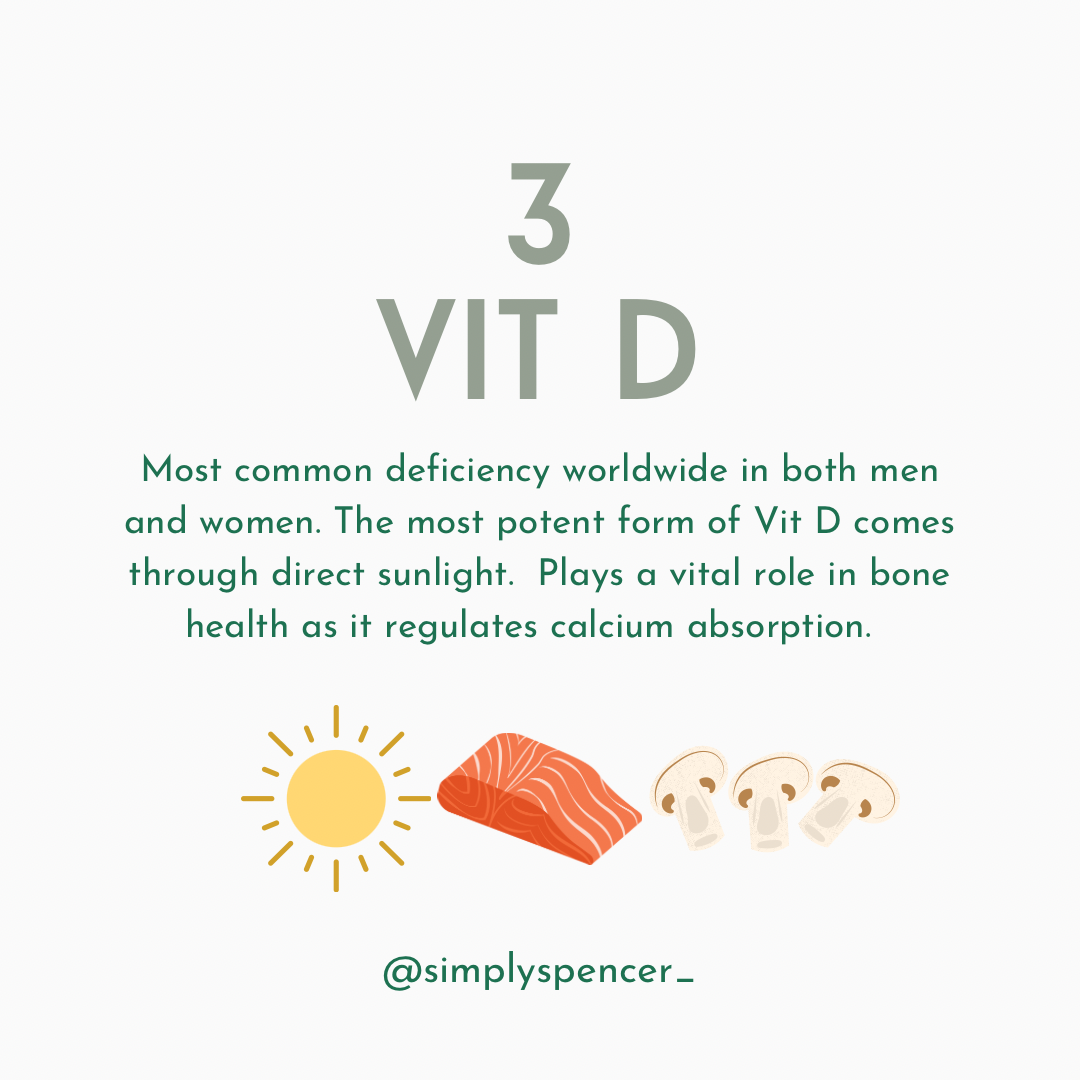The Most Frequent Nutrient Deficiencies I See in Women
Due to a range of factors at play, nutrient deficiencies are more and more common. In 2023, the demands of life seem to be ever-present, 24/7. Especially as women – constant demands in family life, work life, spiritual health, physical health… the list goes on. And this constant stress plays a role in our micronutrient needs.
At the same time, our Western Diet (also known as the “Standard American Diet”… yes, it really is SAD for short) is devoid of rich, nutritious foods. Swapped out for highly processed empty nutrition and excessive energy (calories). This perfect storm of increased demands on our bodies, paired with foods that are severely lacking in nutrients and more calorically dense than we need, is like a slow-moving train in the wrong direction for our health. *Cue micronutrient deficiencies!
I wanted to write this post to shed some light on where many of us are unknowingly falling short. But more importantly – to empower you to know what foods you can eat to broaden your micronutrient intake. Not all nutrient deficiencies have glaringly apparent symptoms off the bat. But over time, a cumulative effect can really be detrimental to our immune systems, energy levels, skin, hormones, and more.
THE TOP 5 DEFICIENCIES I SEE & FOODS TO INCORPORATE
IRON
This deficiency is more common in women than men, due to our increased demands on our blood. Hello menstruation and pregnancy! According to the World Health Organization (WHO), iron deficiency anemia is the only nutrient deficiency that is significant in developed and underdeveloped countries alike. Those at highest risk for IDA are adolescent women, women of reproductive age, vegetarians and vegans.
To support a higher iron status, try increasing intake of animal products like red meat and poultry for heme-iron (most bioavailable). For plant-based rich sources of iron, steer towards leafy greens and legumes. It is also important to eat foods high in Vitamin C (citrus fruits, peppers, tomatoes, cruciferous veggies) with your iron-rich foods, to better help absorption of this mineral.
VITAMIN B12
Hugely important for red blood cell oxygenation, B12 helps produce hemoglobin. Because of this, you will find that B12 status directly impacts energy levels. Common symptoms of a B12 deficiency include fatigue, irritability, and muscle weakness. More severe symptoms include difficulty walking, numbness and tingling in extremities, weight loss, and increased heart rate.
The richest sources of B12 include animal products like eggs, dairy and meats. Mushrooms also contain B12, though not as rich. Once again, because the best sources of B12 are found in animal products, vegetarians and vegans are at higher risk for deficiency.
VITAMIN D
This is the most common deficiency of men and women worldwide. This is likely because there are so few food sources of vitamin D, and the modern-day lifestyle does not have us out and about, directly exposed to the sun in most cases. Those at higher risk for deficiency are those with darker skin. The higher amounts of melanin in darker skin makes it more difficult to convert sunlight into active Vitamin D. With darker skin, you may require longer periods of time in direct sunlight exposure to get adequate Vitamin D.
The BEST source will come from direct sunlight exposure (~10-15 minutes per day on average), which really cannot be outdone. If you live in a low-sunlight area (shorter daylight hours, long dark winters), consider supplementing in addition to getting outside as best you can. The best food source will come from salmon.
MAGNESIUM
Magnesium is extremely important because it plays a role in just about everything happening in our body! Over 300 different bodily processes require magnesium. Which is why the demand of Mag is so high. Also interestingly, research suggests that our soil is more and more depleted of natural minerals, like Mag; which means our food supply naturally contains less of it.
Because of the wide range of uses for Mag in the body, signs of deficiency are all over the map. Deficiency may look like leg cramps, insomnia, poor digestion and constipation, anxiety, and headaches. For the best natural sources of Mag, try incorporating nuts, seeds, leafy greens, and legumes on a daily basis.
FOLATE
This one is important for my pregnant ladies (especially in their first trimester)! Inadequate intake during pregnancy can lead to neural tube defects and spina bifida. But because of the SAD diet, pregnant and non-pregnant ladies alike are at risk for this deficiency. Unfortunately, most OTC multivitamins contain folic acid (the synthetic form of folate). This is a cheaper version of the vitamin and requires that we convert it into its active form (folate) before our bodies can use it. But due to genetic variations, much of the population cannot even convert folic acid! So supplementing with folic acid may not even be doing anything for many.
It is important to get folate from food sources, and to also consider supplementing with a multi that has the active form – especially if pregnant. The richest food sources where folate can be found are legumes and dark leafy greens.
To wrap it up, nutrient deficiencies have become more and more common – despite much of our processed food supply being fortified with vitamins and minerals. This is really cause to stop and consider what our daily intake looks like.
I encourage my nutrition clients, family and friends to “eat the rainbow” of whole foods. This looks like colorful variations of fruits, veggies, nuts, seeds and different types of animal products (land and sea animals alike). If we can consume a diverse diet that is heavily whole foods and minimal in processed foods, we are likely checking the box on most of the micronutrients we need. Couple that with plenty of natural sunlight, and you are creating a recipe for success!








